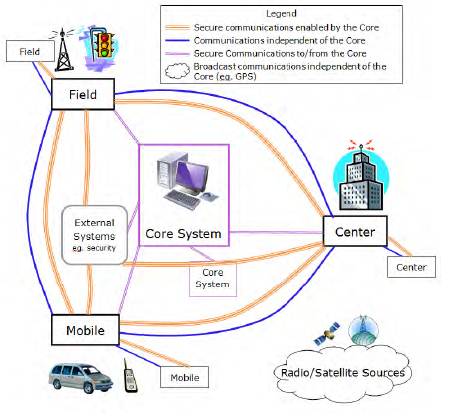
Road Network Operations
& Intelligent Transport Systems
A guide for practitioners!

Road Network Operations
& Intelligent Transport Systems
A guide for practitioners!
An increasing number of vehicle-based solutions that can warn the driver about impending safety risks are installed by automotive manufacturers in new vehicles – and some aftermarket devices are also available.
Infrastructure-based systems, which require communication exchange between the vehicle and roadside to provide warnings, are also being explored. Examples include intersection collision warning and Signal Phase and Timing (SPaT) Warnings. (See New and Emerging Applications and Warning Systems)
Vehicle-based warning systems can help drivers to avoid accidents. Their use in freight and public transport vehicles offers significant safety benefits and has the potential to accelerate more widespread deployment. Legislative options to require their deployment in these vehicles are under consideration.
The USA’s National Highway Traffic Safety Administration (NHTSA) has developed a classification for autonomous vehicles – that scores them on a scale of 0 to 4, depending on their level of automation:
At the simplest level, connected vehicle technologies fall into three major categories:
Interactions may take place between any of the components – vehicle to vehicle (“V2V”), and vehicle to infrastructure (“V2I”) – and are standardised to allow any vehicle to link to any other vehicle or to any roadside unit. The figure below is an example of the key syetms, components and their interactions.

The primary focus of connected vehicle technologies has been on short range communications capabilities – which are optimised for very low latency (transmission delay) in support of safety applications.
There is a very broad range of applications which can be built on top of this framework, including – safety solutions such as collision avoidance, mobility solutions such as enhanced traveller information, and eco-solutions such as signal optimisation.
A fully networked transport system may allow much more fine-detailed management of traffic flows. Experimental systems which communicate from the roadside to the vehicle, the recommended speed and acceleration – based on environmental factors such as congestion and roadway geometry –are being tested in Japan under the ITS Green Safety initiative. (See http://www.its-jp.org/english/its-green-safety-showcase/)
The evolution from non-assisted driving to partially automated driving holds challenges that will need to be addressed during the transition to more and more highly automated vehicles:
There are many unknowns about the impact of large numbers of fully automated vehicles on the overall road transport network. While significant benefits are expected, there will also be many operational challenges. It is too early to determine exactly what they will be – and it is anyway likely be some time before such large scale deployment occurs. There is a lot of research being undertaken to understand the issues – with most major automotive manufacturers performing trials, as well as a number of publicly and privately funded initiatives. The availability of highly – and eventually fully – automated vehicles needs to be taken into account by transport planners.